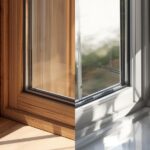There are very few things when it comes to the security of your home and/or business that are as significant as a lock on the door. When it comes to aluminium doors, either as part of a residential patio, commercial storefront, or contemporary office, the choice of an aluminium door lock is much more than a matter of security. It is also a question of durability, design compatibility, use, and even energy efficiency. It is difficult to select the necessary type of lock when there are numerous types and there are a lot of different ones. This guide will lead you through considerations that are needed, favourite kinds of locks, tips on installation, and contemporary trends in aluminium door security.
Why Choosing the Right Lock Matters
A lock is not a thing that only serves as a barrier, but it acts as the first shield of your property. Such an aluminium door lock does more than keep unwanted visitors out, though, also adding to the clean, contemporary aesthetic of aluminium frames. Low-grade locks become corroded, misaligned, or worn out prematurely, ruining safety and appearance. Besides, the method of the lock, the look of the handle, and the rating of the security all influence the safety, or rather security, the convenience of the door, and its durability.
Explore top-quality folding doors in Dubai for seamless indoor-outdoor transitions and contemporary design appeal.
Key Considerations When Selecting an Aluminium Door Lock
It is wise that before you begin comparing the models, you should know what to seek. The following are some of such vital factors:
1. Compatibility with Door Type
Not all locks fit all the aluminium doors. Other doors with different mechanisms, such as sliding, hinged, bi-fold, and French aluminium doors, may be required. An example would be a sliding door lock, where the hook bolts or even a multi-point lock would be common, whereas a standard hinged entry door may have a mortice or euro cylinder lock.
Experience smooth, effortless operation with our premium aluminium lift and slide doors, designed for wide openings.
2. Security Standards
Identify those locks that have reached established security standards, e.g., BS 3621, or PAS 24 in Britain. These standards guarantee the fact that the lock is tested in drilling, picking, and forced entry.
3. Ease of Use & Ergonomics
A lock must not only be resistant, but must also be comfortable to use. The usability can be affected by lever handles, pull handles, and even flush handles on sliding doors.
4. Durability & Material Quality
Select locks that are made of rust-proof material stainless steel or zinc alloy. Aluminium doors are likely to be subject to weather conditions and movements in the elements; therefore, the lock must be weatherproof without losing its properties upon use or after temperature changes.
Our minimal sliding door system combines elegance and function, perfect for contemporary architectural designs.
5. Smart Features & Automation
Most citizens and companies prefer to switch to smart locks with remote access, fingerprint type, and the possibility of being integrated with home security systems.
Popular Types of Locks for Aluminium Doors
Depending on the design of the door, the level of security required, and personal inclination, there are various options of door locks that can be made using aluminium.
Mortice Locks
The lock is a mortice lock and jams inside the very door itself, offering high security. Among the variations are the mortice deadlock, a key-operated lock and unlock of the mortice deadlock, and the mortice sash lock, which is a combination of a latch and a deadbolt.
Euro Cylinder Locks
Euro cylinder locks are also versatile, and most people tend to use them with the multipoint locking system because they can be easily repaired should something go wrong with them. Nevertheless, it is important to select anti-snap, anti-drill locks to avoid standard techniques of burglary.
Discover a wide range of window hinges designed to suit both modern and traditional window styles.
Multipoint Locking Systems
A multipoint lock locks the door at several places, such as the top, middle, and bottom, when the handle is lifted. Aluminium patio doors and bi-folds are particularly popular using this system, which gives great sealing and forced entry resistance.
Rim or Night Latches
Night latches can be seen on internal or secondary doors and automatically lock when they are closed; however, they can be opened internally without a key.
Smart & Electronic Locks
Electronic locksmithing Aluminium doors are also increasingly using smart locks, especially in the form of electric and keypad entry systems and fingerprint scanners. They are convenient, can be monitored remotely, and provide improved control of persons who gain access to the property.
| Lock Type | Best For | Security Level | Common Use |
| Mortice Lock | Hinged aluminium doors | High | Front and back entry doors |
| Euro Cylinder | Multipoint lock setups | Medium–High | Patio and bi-fold doors |
| Multipoint System | Large aluminium doors | High | Sliding and French doors |
| Night Latch | Secondary entry doors | Medium | Internal and shared building doors |
| Smart Lock | Modern, tech-integrated doors | High | Residential & commercial aluminium |
Our modern pergola aluminium designs offer shade, comfort, and elegance for any patio or garden setting.
The Role of Door Handles in Lock Performance
The handle is not an ornament; rather, it has an extensive effect on the functionality of the lock. Multipoint locking doors are usually fitted with lever handles, whereas aluminium sliding doors often use pull handles. The right handle makes it work smoothly and puts less wear on the locking mechanism, as well as contributes to the overall appearance of the door.
How to Install an Aluminium Door Lock
Although it is good to hire a professional to give a maximum level of security, being conversant with the procedure saves you time in making informed decisions.
- Note the correct position of the lock by marking and measuring it.
- Mark and saw the door, ensuring that the cut-outs are just right to cater to the selected body and cylinder of the lock.
- Install the Lock and Handle so that the mechanism operates easily.
- Mount the Strike Plate onto the frame, adjusting it with the latch or bolts.
- Test the Operation and ensure alignment, as well as ensuring all locking points are engaged.
- With aluminium doors, screws and fixings must cater to metal frames, and should not be over-tightened to the extent of deforming the aluminium.
Troubleshooting & Maintenance
Even an optimum aluminium door lock requires some care every now and then.
- In case of sticky keys, use graphite powder instead of oil so as not to attract dust.
- Due to misalignment, there might be trouble locking the strike plate or hinges.
- To avoid corrosion, wash the outside with mild detergent and a clean cloth.
Taking care of your lock regularly will result in its long life and its being secure.
Advanced Features & Future Trends
Lock technologies are ever advancing. You can look forward to some increased use of biometric locks and tamper-resistant smart devices, but also integration into a more comprehensive home automation system. Not only do these make the area more secure, but they are convenient as well- picture unlocking the aluminium door using your smartphone as you move towards the driveway.
Discover premium tilt-turn windows that Dubai homeowners trust for versatility, ventilation, and modern design.
Conclusion
The correct selection of an aluminium door lock is a security, fashion, and economic choice. Whether it is the basic mortice lock or high-tech smart lock configuration, the appropriate selection will depend on your door, the level of security needed, and ease of use. Take into account the durability, the requirements of security, and modern features, and you will make your aluminium door both stylish as well as protective over the years.





